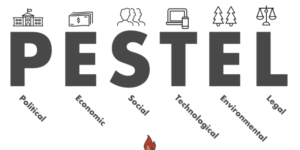When your salary arrives on time, you can afford to eat chicken. But when your income declines, you may have to settle for eggs instead. If the decline continues, you might end up eating what the chicken eats—grains like corn and wheat. And if your salary disappears altogether, you’ll find yourself living like a chicken, spending your days in search of sustenance.
This vivid parable captures the fragile reality of modern financial life, where one’s relationship with income and expenditure determines not only comfort but long-term security. It is a story about financial literacy, investment planning, and the urgent need for an alternative financial strategy beyond the monthly salary.
1.0 The Fragility of the Paycheque
In today’s global economy, many live paycheque to paycheque, a phenomenon exacerbated by inflation, precarious employment, and stagnant wages (Fuzi, 2023). Studies by the Organisation for Economic Co-operation and Development (OECD) reveal that a significant portion of the working population lacks sufficient savings to cover three months of expenses, leaving them highly vulnerable to financial shocks (Lewis & Messy, 2012).
According to Callaghan, Fribbance, and Higginson (2011), personal finance is not merely about earning money—it’s about managing income, expenditure, and future uncertainty. Without the ability to plan beyond the next pay period, even those earning substantial salaries can find themselves in economic distress.
The metaphor of “eating chicken when the salary arrives” thus symbolises financial comfort, while “eating what the chicken eats” reflects economic regression, where consumption patterns deteriorate as income diminishes. This progression mirrors real-world income shocks that force families to downscale their living standards, sometimes permanently.
2.0 The Importance of Financial Literacy
Financial literacy—the ability to understand and apply concepts of saving, investing, and budgeting—is central to avoiding such decline. Research by Bhushan (2014) found a strong correlation between financial literacy and the investment behaviour of salaried individuals. Those with higher literacy levels tend to make informed financial decisions, diversify their portfolios, and plan for retirement.
In the UK, financial literacy initiatives such as the Personal Finance Education Group (PFEG) have aimed to embed personal finance into school curricula, recognising that financial competence is not innate but learned behaviour (Vitaliia, 2023). However, despite these efforts, surveys continue to show wide gaps in financial knowledge among working adults, particularly regarding investment risk and compound interest (Akin, 2021).
According to Navickas, Gudaitis, and Krajnakova (2014), even small improvements in financial understanding can lead to substantial behavioural changes, encouraging individuals to save regularly and manage credit wisely. In other words, knowledge is the seed, and saving is the act of planting it.
3.0 Salary as a Seed: The Case for Saving and Investing
The story’s metaphor that “your salary is like a seed” aligns closely with modern theories of behavioural finance, which view money management as both psychological and strategic (Redhead, 2008). A seed that is entirely consumed provides momentary satisfaction but no growth. In contrast, a portion planted—through saving and investment—yields future income and security.
Prusty (2011) found that households with structured saving plans and defined financial goals demonstrate greater resilience to economic downturns. Similarly, Owusu, Ansong, and Koomson (2020) highlight the role of parental financial behaviour in shaping youth attitudes toward saving. Early exposure to prudent financial habits leads to higher rates of long-term investment participation.
To “save a portion and invest wisely” is thus to transform the salary from mere sustenance into capital for opportunity. Modern investment vehicles such as pension funds, unit trusts, and index-linked savings provide means to convert income into assets, protecting individuals against future uncertainties (Byrne, 2007).
4.0 The Chicken’s Lesson: Adaptation and Diversification
In behavioural terms, the story also teaches adaptability and diversification. Just as a farmer does not depend on one crop, an individual should not depend solely on one source of income. The OECD (2012) stresses the importance of financial diversification—allocating resources across different instruments to mitigate risk.
According to Janor et al. (2016), in both the UK and Malaysia, individuals with diversified income streams and investments exhibit greater financial stability and confidence in their economic future. This is echoed by Goud (2022), who observed that diversified savers reported higher levels of financial satisfaction and lower anxiety about income loss.
The lesson of the chicken, then, is to recognise the danger of dependence. When one’s financial wellbeing is tied entirely to a single salary, the loss of employment or health can trigger cascading hardship.
5.0 Planning for Tomorrow: Financial Security and Ageing
The passage reminds us that “you will not remain young or strong forever.” This notion has profound implications for retirement planning. Farrar et al. (2019), studying women’s pre-retirement behaviour in the UK, found that financial literacy directly influences the likelihood of proactive pension planning. Those who understand compound growth and inflation are more likely to allocate funds for long-term security.
The behavioural life-cycle hypothesis (Shefrin & Thaler, 1988, cited in Redhead, 2008) supports this, positing that individuals mentally divide income into distinct categories—current consumption, precautionary savings, and investment for the future. Those who fail to maintain these mental “accounts” often overspend in the present, leaving themselves vulnerable later in life.
6.0 The Alternative Plan: Building Financial Independence
In practical terms, an “alternative plan” may involve creating multiple income streams, such as freelance work, online enterprises, rental income, or dividend investments. Financial education literature increasingly highlights the value of entrepreneurial thinking as part of personal finance (Mohoanyane, 2015).
According to Callaghan et al. (2011), financial independence is achieved when passive income covers essential expenses, freeing the individual from reliance on wage labour. This concept aligns with the message of the parable: you won’t remain an employee forever, so the time to invest in independence is now.
Behavioural barriers—such as overconfidence, procrastination, and loss aversion—often impede such proactive investment (Akin, 2021). Overcoming them requires discipline, education, and a long-term mindset, all of which are core to financial well-being (OECD, 2012).
7.0 Becoming the Wise Farmer
The story of the chicken and the salary is more than a metaphor—it’s a mirror of our economic psychology. It reminds us that financial security is not about how much one earns, but how much one saves, invests, and plans. Salaries may fluctuate, but knowledge and discipline compound like interest over time.
To avoid becoming “the chicken searching for food,” one must become the farmer who feeds it—nurturing their income seeds through education, prudence, and investment. As Redhead (2008) notes, financial behaviour is learned and cultivated, not inherited. With the right tools, one can ensure that the day will indeed come when they can “eat chicken whenever they wish”—not by chance, but by choice.
References
Akin, I. (2021) Determinants of financial literacy and behavioural biases of young adults: the comparison of Bristol, UK and Istanbul. Bath Spa University.
Bhushan, P. (2014) ‘Relationship between financial literacy and investment behaviour of salaried individuals’, Journal of Business Management & Social Sciences Research, 3(5), pp. 82–87.
Byrne, A. (2007) Employee saving and investment decisions in defined contribution pension plans: Survey evidence from the UK. Financial Services Review.
Callaghan, G., Fribbance, I. and Higginson, M. (2011) Personal Finance. London: Routledge.
Farrar, S., Moizer, J., Lean, J. and Hyde, M. (2019) ‘Gender, financial literacy, and preretirement planning in the UK’, Journal of Women & Aging, 31(5), pp. 426–440.
Goud, M.M. (2022) ‘A study on the saving and investment behaviour of individual investors’, Journal of Commerce and Accounting Research, 11(2), pp. 54–67.
Lewis, S. and Messy, F.A. (2012) Financial education, savings and investments: An overview. OECD Publishing.
Navickas, M., Gudaitis, T. and Krajnakova, E. (2014) ‘Influence of financial literacy on management of personal finances in a young household’, Business: Theory and Practice, 15(4), pp. 351–360.
Owusu, G.M.Y., Ansong, R. and Koomson, T.A.A. (2020) ‘Savings and investment behaviour of young adults: the role of financial literacy and parental financial behaviour’, African Journal of Management Research, 26(1), pp. 22–39.
Prusty, S. (2011) ‘Household saving behaviour: Role of financial literacy and saving plans’, Journal of World Economic Review, 6(2), pp. 45–56.
Redhead, K. (2008) Personal Finance and Investments: A Behavioural Finance Perspective. London: Routledge.
Vitaliia, S. (2023) Experience in improving the financial literacy of the population as a strategy for effective personal finance management. Poltava National Technical University.









